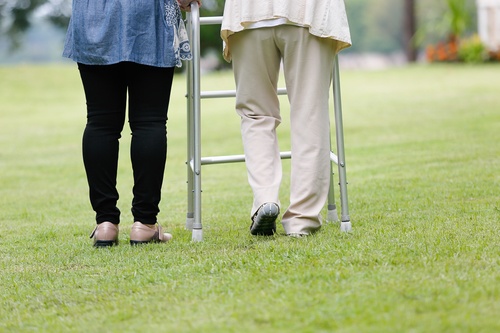Do the majority of the older adults we treat have an accurate perception of their physical activity level?

The most recent experience I can recall about a patient’s perception about physical activity happened a few months ago. I had an older adult who was noting an increase in her normal amount of strength and also was feeling deconditioned. She had been ill multiple times over the past year with pneumonia.
As we were talking about her typical activity level, she insinuated that she walked with her granddaughter, walked at the senior center and spent time walking in her home. I should have picked up on her daughter’s nonverbal body language. The following week, the patient had a pedometer. The daughter got her a pedometer and wanted her to use it to show me her activity level. I asked my patient how her day had been and about her walking. The patient mentioned a significant amount of walking prior to attending her visit. I told her I was curious about how many steps that would be and had her show me her pedometer recordings.
Let’s just say that 500 steps was far, far less than the patient described. From the experience with that particular patient, I learned that a patient’s perceptions may not necessarily reflect true judgment of activity level. This particular patient would definitely be considered frail and really wasn’t achieving the required amount of physical activity to begin to change her status to pre-frail.
I do believe that wearable sensors may definitely help in providing information to help us guide patients through their rehabilitation. The sensors can provide both more accurate information for us while at the same time motivating patients.
You’ll find the abstract to the recent study below.
Wearable Sensors and the Assessment of Frailty among Vulnerable Older Adults: An Observational Cohort Study.
Abstract
Background: The geriatric syndrome of frailty is one of the greatest challenges facing the U.S. aging population. Frailty in older adults is associated with higher adverse outcomes, such as mortality and hospitalization. Identifying precise early indicators of pre-frailty and measures of specific frailty components are of key importance to enable targeted interventions and remediation. We hypothesize that sensor-derived parameters, measured by a pendant accelerometer device in the home setting, are sensitive to identifying pre-frailty.
Methods: Using the Fried frailty phenotype criteria, 153 community-dwelling, ambulatory older adults were classified as pre-frail (51%), frail (22%), or non-frail (27%). A pendant sensor was used to monitor the at home physical activity, using a chest acceleration over 48 h. An algorithm was developed to quantify physical activity pattern (PAP), physical activity behavior (PAB), and sleep quality parameters. Statistically significant parameters were selected to discriminate the pre-frail from frail and non-frail adults.
Results: The stepping parameters, walking parameters, PAB parameters (sedentary and moderate-to-vigorous activity), and the combined parameters reached and area under the curve of 0.87, 0.85, 0.85, and 0.88, respectively, for identifying pre-frail adults. No sleep parameters discriminated the pre-frail from the rest of the adults.
Conclusions: This study demonstrates that a pendant sensor can identify pre-frailty via daily home monitoring. These findings may open new opportunities in order to remotely measure and track frailty via telehealth technologies.
Sensors (Basel). 2018 Apr 26;18(5). pii: E1336. doi: 10.3390/s18051336.
{{cta(‘c6ecd159-44e1-4eb3-9940-fbb5cb2761d5’)}}

Leave a Reply